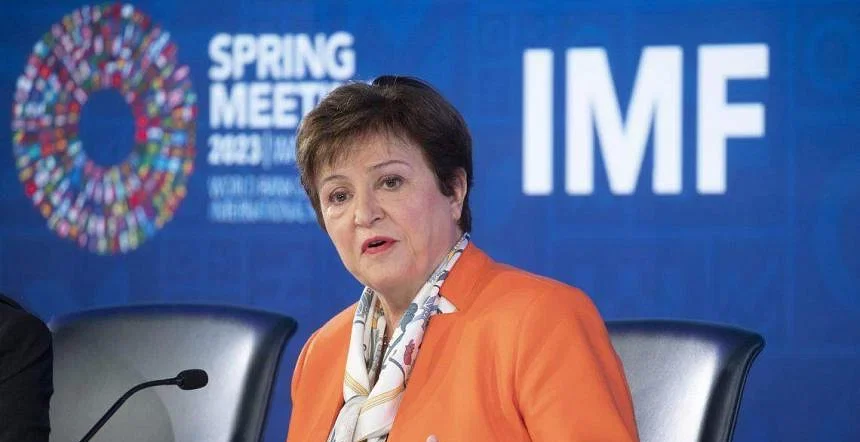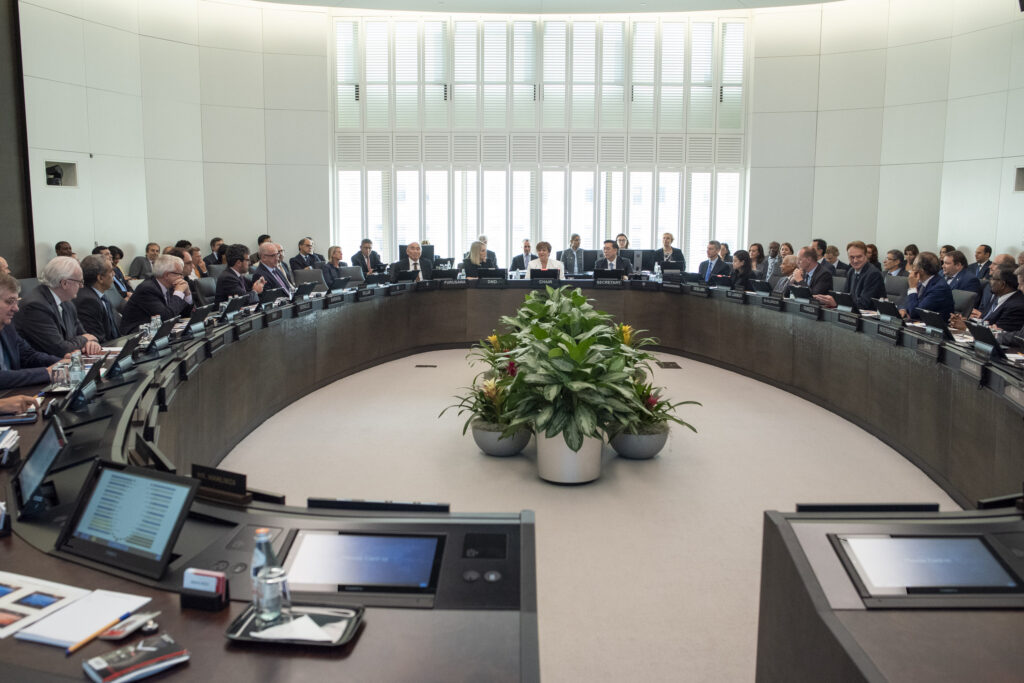On this day, December 16, we commemorate the first anniversary of the International Monetary Fund’s (IMF) approval of the Extended Fund Facility (EFF) program with Egypt over 46 months with a loan amounting to $3 billion.
Following the green light from the IMF, Egypt swiftly received the inaugural tranche of the loan, totaling $347 million, marking the beginning of an eight-tranche disbursement plan. However, the journey hasn’t been without its challenges. The IMF’s first and second reviews, originally slated for March and September, have yet to be completed.
As we reflect on this significant financial arrangement, the business community watches with anticipation, keenly observing how Egypt navigates the complexities of its IMF commitments and the subsequent impact on its economic landscape. The postponement of the reviews has sparked uncertainties regarding the fate of this deal and the challenges Egypt faces in fulfilling its commitments, especially amid pronounced local and regional challenges that are casting a shadow on the country’s economic prospects.
Additional financing
During a recent press briefing this month, IMF spokesperson Julie Kozack disclosed ongoing discussions between the IMF and Egypt to revive the somewhat stagnant program. These talks encompass not only advancing the existing program but also exploring the provision of additional financing. The goal is to support Egypt in successfully implementing a policy package, particularly crucial in light of the ongoing Israel-Palestine conflict in Gaza. This conflict is anticipated to have adverse effects on Egypt’s tourism revenues, a key source of hard currency and a significant contributor to the country’s budget.
Kozack emphasized the severity of the macroeconomic challenges facing the Egyptian economy, underscoring the added complexity arising from the recent conflict in Gaza. The IMF is actively engaged in dialogues with Egyptian authorities to formulate policies that could facilitate the completion of the first and second reviews under the $3 billion EFF loan program, he said.
A week prior, IMF Managing Director Kristalina Georgieva affirmed the Fund’s commitment to supporting the Egyptian economy, recognizing the nation’s persistent efforts in navigating its economic challenges. Notably, during a meeting between the Governor of the Central Bank of Egypt (CBE) Hassan Abdalla and Georgieva, the IMF praised the CBE’s adept management of monetary policy amid exceptional difficulties.
These recent developments from the IMF signal a positive outlook for the $3 billion loan program, suggesting imminent progress and the likelihood of additional financing. This comes in the wake of Egypt’s successful application for a $1 billion loan from the IMF’s newly established Resilience and Sustainability Trust last year.
Loan repayment
The specific amount remains undetermined, particularly as, under the existing $3 billion loan program, Egypt has already surpassed its quota for accessing funds through the Extended Fund Facility (EFF).
Egypt secured the $3 billion loan with exceptional access, having exceeded the cumulative access limit of 435% of its quota under the $5.2 billion Stand-By Arrangement (SBA) loan obtained in FY2020/21 to address the impacts of the COVID-19 outbreak.
In addition, Egypt is still repaying the loans with services for the $12 billion loan program it finalized in 2019, and over $8 billion in loans under both the SBA and the Rapid Finance Instrument (RFI).
Egypt is grappling with three significant challenges, that potentially impact its economic trajectory in 2024. These include a pronounced shortage of US dollar liquidity in the local market, and a substantial external financing gap denoting the variance between the anticipated demand and supply of foreign currency financing. This encompasses the need for foreign currency to replenish the foreign reserves of the CBE. Additionally, there’s a growing concern over the escalation of the US dollar rate in the parallel currency market. These challenges collectively pose substantial hurdles to Egypt’s economic performance and stability in the coming year.
The IMF has projected a substantial financing gap for Egypt, estimated to reach $17 billion by the conclusion of the current loan program. In the shorter term, the anticipated financing gap for the fiscal year 2023/2024, concluding at the end of June 2023, is expected to range between $6 billion and $8 billion.
Black market
Compounding these challenges is the significant disparity between the official exchange rate of the US dollar and its parallel market counterpart. This wide gap, currently exceeding 60%, poses a deterrent for foreign investors considering Egypt as a potential destination for their investments. Presently, the official exchange rate for the US dollar is nearing EGP 31/USD 1, while in the parallel market, it is trading at over EGP 52/USD 1. Bridging this divergence is crucial for fostering investor confidence and bolstering Egypt’s appeal as an investment-friendly destination.
Egypt is urgently addressing its economic challenges and aims to make significant headway in the current IMF loan program during the second half of FY2023/2024, commencing in January.
To bolster its financial position, Egypt has recently secured approximately $5 billion in late FY2022/2023, the initial fiscal year of the loan program. Of this total, $2 billion will be generated through the sale of equity in public sector companies, aligning with the authorities’ privatization strategy spearheaded by the Sovereign Fund of Egypt (SFE). Additionally, there will be a rollover of Gulf Cooperation Council (GCC) deposits at the central bank. The remaining $3 billion will be sourced from multilateral support.
As Egypt positions itself for 2024, the success of the IMF loan program hinges on the country’s ability to attract more foreign investors to the local market, accelerate progress on its gradual Initial Public Offering (IPO) program, and ensure US dollar liquidity in the local market through assertive measures to curb the activities of the parallel currency market.







